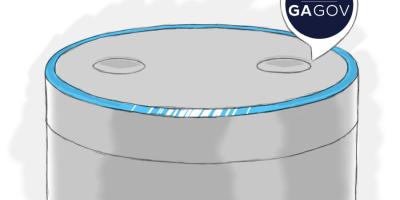
Nestlé Purina’s 7-Step Guide to Digital Transformation

“Our love of technology is only rivaled by our fear of change,” Allie Eskelsen, UX designer at Nestlé Purina North America, said at Acquia Engage, the company's annual recognition of its customers' successes.
The young developer has worked at Nestlé Purina for fewer than three years and, in that time, has successfully overhauled all of the multibillion-dollar company’s web properties — including Friskies, Purina ONE, Fancy Feast, and Beneful — using Acquia Cloud Site Factory. “I grew up in the digital age,” said the 2015 college graduate. “I’m a millennial. All these things that come naturally to me are so scary to the people around me.”
Although the move to Site Factory may have seemed obvious to a digital native like Eskelsen, she said for a company like Nestlé Purina, which is rooted in tradition and legacy technology, it was a challenging undertaking. Eskelsen distilled her experience into seven tips to help digital leaders overcome the fear of change and pioneer a successful digital transformation in legacy organizations.
Step 1: Identify the Problem
Define the problem and come up with a clear objective and high-level plan for solving it. For Eskelsen, the problem was the complicated digital sprawl marked by more than 65 Nestlé Purina websites — all separately managed. The individual management of those sites resulted in inconsistent user experience, redundant marketing costs, security compliance issues, and slow launch times. Each site would take 12–18 months to launch. From the start, the objective was clear: to create an exceptional and consistent consumer-centric experience across all of Nestle Purina’s brand websites.
Step 2: Start at the Top
The project was immediately met with resistance. Eskelsen faced a series of questions: What will this cost us? When will we see results? What in the world are templates? Who will manage this? What about our agencies? What about our existing sites?
And some discouraging responses: This won’t get approved. The brands won't be on board. Each brand needs to be its own brand.
Eskelsen's team knew they needed more buy-in for the project and decided to start at the top. Her no. 1 tip for pitching enterprise execs? Lead with results. Eskelsen's team knew the project wasn’t going to show immediate, quantifiable return on investment (ROI), so they emphasized the investment's long-term benefits to Nestlé Purina’s chief marketing officer.
Step 3: Remove Barriers
Buy-in from top executives won't remove all roadblocks, though. Digital transformation is a long road that demands collaboration with multiple stakeholders. Roadblocks should be expected.
Eskelsen said digital leaders need to be disruptive and scrappy. Well-established enterprise companies are often marked by an out-of-date management structure and legacy technology. She credited her team for its tenacity, as they worked through challenges that came up along the way.
Step 4: Communicate Early and Often
To maintain and drum up continuous support, Eskelsen's team needed to promote transparency throughout the course of the project. ”To ensure success, you have to have advocates across the organization,” Eskelsen said. “Everyone wants to know everything, and this is really hard in a large organization. When people are not involved in something, they feel uneasy. They want to be informed.”
At a large enterprise like Nestlé Purina, documenting everything, sharing timelines and strategies, and frequently emailing project updates to the larger organization helps dispel uncertainty and head off uneasy inquiries.
Step 5: Validate Everything
Before tackling the full, multisite project, Nestlé Purina decided to launch a pilot to validate that the project could work. They chose to overhaul Fancy Feast’s website, one of the many billion-dollar brands under the Nestlé Purina umbrella. From pilot to final product, Eskelsen’s team collected data about what worked with the new websites, what didn’t, and what could be improved, which was then shared with colleagues who weren’t involved in the day-to-day trials.
Step 6: Never Say No
When taking on any big task at work, Eskelsen warned, you should never say no, a lesson she learned over the course of the project. In the past, her mentors and colleagues often said she should learn to say “no” more to stay focused to the task at hand and not waste any time responding to useless queries.
But “saying no fails on two accounts. It fails to educate, and it burns bridges,” she said. “The person either argues with you or walks away feeling disappointed. And then you become a barrier for them to avoid in the future.” By opening up to any and all requests and questions around the project, Eskelsen said she and her team ended up building relationships and collecting more support from those outside of their immediate group. She's confident all the times she said “yes” will continue to pay off.
Step 7: Iterate and Refine
Even after a successful digital rehaul, the work isn't done — nor will it ever be. Eskelsen compared Nestlé Purina’s work with Site Factory to a garden: ”By all means built but not finished.” Instead of the frustration that may invite, focus on the opportunity. There's room to make mistakes, get the product out there, learn from consumer feedback and user testing, and continuously improve every iteration.
To see for yourself what Site Factory could do for your enterprise, meet with a representative.

